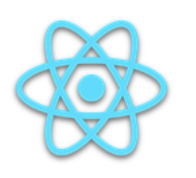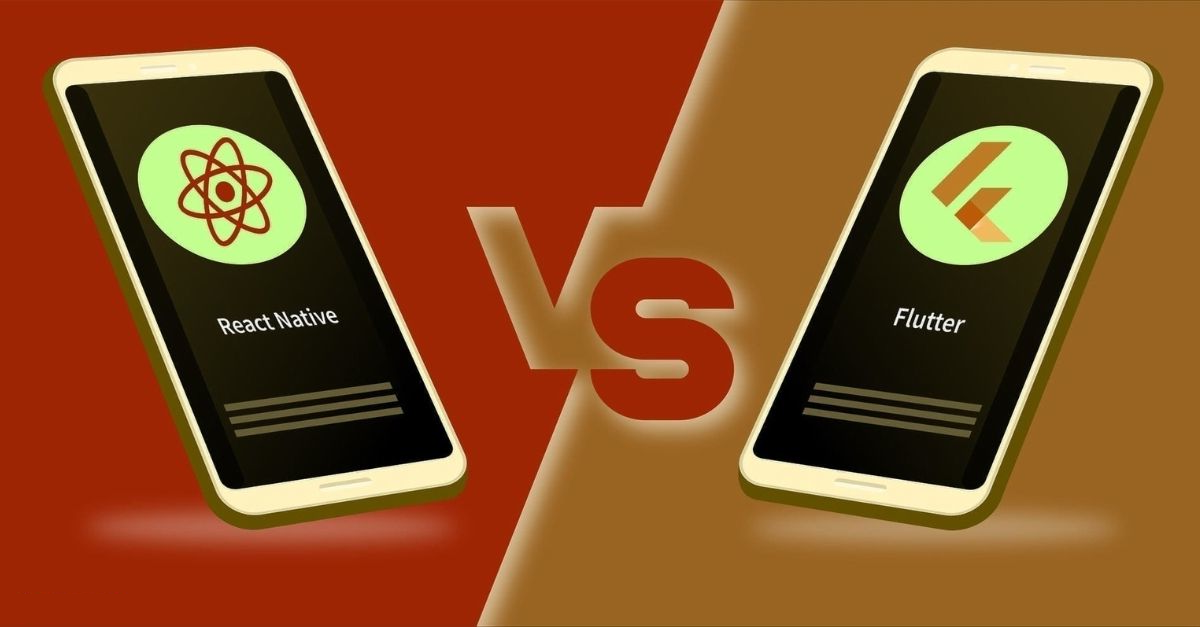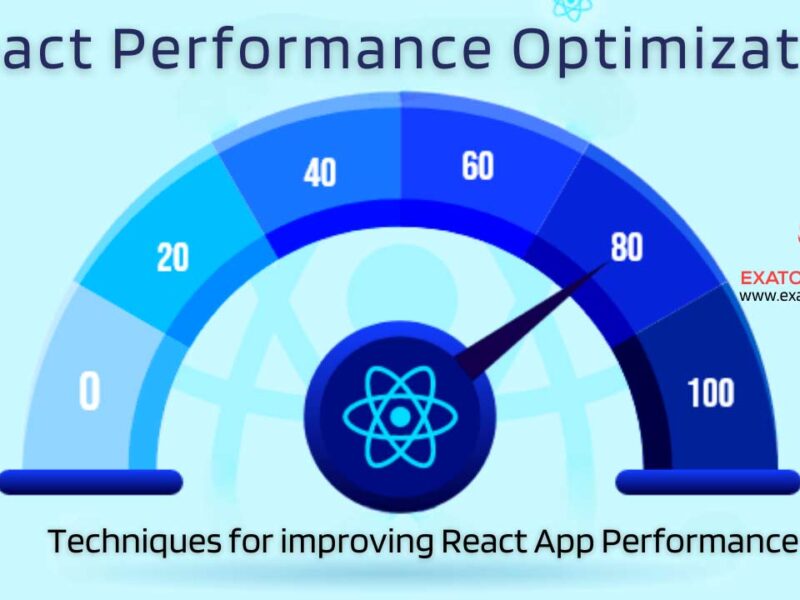Do you want to create applications faster? And you want to cut expenses with cross-platform development but aren’t sure which technology to use? Exato Software is here to help you out! It’s tempting in the computer industry to jump on the newest trends, especially when new frameworks arrive with new pre-coded modules and promises of lightning-fast performance. Clients arrive at Exato Software feeling somewhat overwhelmed by their options. It’s easy to understand why. Comparing these two is frequently a decision between “excellent” and “wonderful.” However, there are subtle differences between the two platforms, and in this article, we’ll compare Flutter and React Native so you can make the best decision for your next project.
Both are cross-platform mobile frameworks with incredible capability, active user communities, and a massive library of pre-programmed modules that may significantly speed up development. However, knowing the distinctions between Flutter and React Native might be crucial in laying the groundwork for your future project. Whether you want to build a transportation app, a medical app, an on-demand delivery app, or a music app, you should grasp all your project needs before selecting a framework. So before moving ahead let’s first understand the basics of Flutter and React Native.
The Basics – Flutter and React Native
Google created the framework in 2017, and it is meant to function across platforms so that it can be expressed on any mobile device or tied into your current online apps. Thanks significantly to Google’s influence, it is regarded as one of the most potent open-source frameworks available today.
It has several advantages, such as a comprehensive development environment, hot reload capabilities, and the fact that it is open-source and free to use. Despite this, it has drawbacks, such as its vast size and dependency on local tools and technology. Flutter allows for the creation of cross-platform apps. It enables developers to create and deliver aesthetically appealing, natively-compiled applications for mobile (iOS, Android), web, and desktop platforms – all from a single codebase (source: official Flutter website). Nonetheless, it is a popular alternative for firms with large framework requirements, such as Alibaba, Hookle, Topline, OfflinePal, Hamilton, and others. Its fast rendering and other advantages make it a strong candidate to eclipse React’s popularity soon. To be trendy and employ flutter developers, you should consider Flutter app development costs.
So this is all about Flutter now let’s move on to React Native. This framework, created by Facebook in 2015, is a widely utilized and well-liked cross-platform app development technology currently one of the most popular frameworks in the world. What makes it so popular? Its versatility is mainly because it allows developers to construct mobile apps using React and JavaScript alongside many other native platform capabilities.
This open-source framework provides straightforward development of native UI components, hot reloading, platform-specific code, and one of the world’s largest UI support groups. Developers like the simplicity of its hundreds of plug-and-play application components. Also, there are some significant drawbacks to this paradigm. It features a more sophisticated user interface, and navigating can be smoother. However, it remains a favorite of many major web organizations, including Facebook, Bloomberg, Vogue, Tesla, Skype, and Artsy. Their whole online systems are developed using React Native. We don’t anticipate this tendency to taper down anytime soon.
Advantages of Flutter Technology

Fast Coding
From a developer’s viewpoint, Flutter allows for more dynamic – and faster – app development. It is one of the best features of Flutter, and every top mobile app development business praises it.
Developers may make changes to the codebase in real time and see them reflected in the application. This is the so-called Hot reload functionality, and updates usually take (milli-)seconds to appear.
The capability enables teams to add features, correct issues quickly, and test new ideas. Furthermore, Hot Reload is extremely useful for developer-designer cooperation.
One Codebase For Multiple Platforms
Flutter allows developers to construct a single codebase for two applications that run on both the iOS and Android platforms.
Flutter is platform-agnostic since it has widgets and designs, which means you can have the same app on two platforms (though you can easily differentiate your apps).
Google is actively developing Flutter for Web, which is available as a preview version. Once completed, a single codebase will span the Android, iOS, and web platforms.
Less Testing Work Means Less Errors
Because you are testing the same application on both platforms, your Quality Assurance process will be considerably faster.
Because we can construct the same tests on both platforms, we write around 50% fewer automated tests, minimizing the burden on our QA team.
However, you will still need to do manual testing on a par with native programming since your QA professionals will need to test both apps on each platform manually.
Design Trending Apps
Flutter is not dependent on native system components. On the other hand, Flutter has its own collection of unique widgets rendered and handled by the framework’s graphics engine (source). Users will notice UI components that differ from usual native apps, although this isn’t always a drawback.

Flutter apps have a highly user-friendly UI: a significant advantage for Flutter over React Native deriving from a focus on aesthetic details. Flutter was designed to develop your own widgets or alter an existing one quickly.
Disadvantages of Flutter Technology
Developer Community’s Size
Most people would tell you React Native has a more established and experienced developer community than Flutter. Furthermore, JavaScript in programming languages is more commonly used than Dart, at least not yet. Flutter has a lot of catching up to do if it wants to compete with its “older brother,” which is sensible. As is usual for any new, young product, the community needs time to educate its audience and develop more expertise.
However, we at Exato Software don’t consider it a significant disadvantage. The Flutter community is rapidly expanding. Furthermore, there is a lot of buzz about the toolbox.
Please remember that Stack Overflow tag trends reflect a significant surge in developer interest in Flutter. There are 257+ Flutter courses on Udemy (with about 1 410,000 course participants). There are also 75 Dart courses (with around 608,000 participants (in May 2021)).
Furthermore, React Native enrollment is smaller, with around 866,000 students enrolled in 133 courses. On Github, Flutter has over 120,000 stars, whereas React Native has over 95,300.
To summarize, Flutter had a smaller, less experienced community two years ago, and Dart is more specialized than JavaScript. Things are beginning to improve. According to current trends, Flutter outperforms its opponent in this area.
Regular Integration Support
At the time of writing, Flutter does not support CI platforms such as Travis or Jenkins. As a result, your developers will need to utilize and maintain bespoke scripts like this to accomplish automated building, testing, and deployment.
Risk of Platform and Size of Application
Even though Flutter is open source, losing Google support for the project would be disastrous.
However, since the Beta version of Flutter was launched, the Google team has only increased its efforts, as seen by Flutter’s significant involvement during Google IO ’19 and the recent Flutter Live event. We cannot foresee a scenario in which Google abandons Flutter.
Flutter applications are more significant than native ones. Check the post-APK Size Comparison. However, the Flutter team aims to reduce the size of Flutter-created apps.
Pros of React Native Technology

Freedom of Choice For Developer
React Native allows developers to create cross-platform apps; nothing more, nothing less.
The benefit is that React Native allows the developer to choose which solutions to utilize based on both the project’s requirements and the developer’s preferences.
For example, suppose a developer has to pick how to handle a global state (how to store and manage data used in many components of the app), a router library, or whether to use JavaScript or TypeScript. In that case, they may choose whether to utilize a custom UI library or create their own.
Big and Active Community
There is a sizable development community for React Native. Not only that, but numerous tutorials, libraries, and UI frameworks make the technology simple to master – as well as quick and straightforward to construct.
When comparing repositories dedicated to accumulating information, tools, and resources about specific technologies, React Native outperforms Xamarin, Flutter, and Ionic (source: Awesome-Flutter, Awesome-ReactNative, Awesome-Ionic, Awesome-Xamarin).
Furthermore, React Native is a member of the “React family.” While many of its libraries are platform agnostic (for example, Formik, React Router, and styled components), they function on both web and mobile.

East To Learn
This benefit on our list is mostly aimed at React developers. If you have a history in web development and are already familiar with popular React solutions, you can simply transition to working with React Native without learning new frameworks. The same libraries, tools, and patterns may be used.
Cons of React Native Technology
Less Components
React Native comes with simply the most essential components (many of them are adaptive to a platform out of the box, like a button, loading indicator, or slider).
As stated in this paragraph, external repositories exist with several extra React Native components. They may be used in a project by a developer, but it will take more effort and time.
Flutter, on the other hand, is meant to support Material Design out of the box. Therefore, the framework supports a much more comprehensive range of widgets. It saves you time. Most views may be created by a Flutter developer utilizing pre-made widgets easily modifiable and cross-platform consistent.
Unreliable UI
You can be sure that your app’s components will be updated right away with every OS UI change since React Native leverages native components internally. Despite this, it only rarely happens and can ruin the software’s user interface.
Worse, upgrades may become considerably riskier if they result in specific Native Components API modifications. The positive news Rarely does an occurrence of this nature occur. The UI of the app is much more stable while using Flutter (due to the way the framework produces native components on its own).
Flutter vs React Native
What should I do? React Native or Flutter? First and foremost, let’s be clear. At Exato Software, we frequently propose either framework since they have advantages and downsides based on the project circumstances. The goal is to comprehend the features rather than what others think are the trends. Let’s get started.
| Category | Flutter | React Native |
Programming Language | The Dart and Flutter FrameworkDart, Google’s programming language for this framework, was created in 2011. Many people believe that programming in Dart is slightly faster than programming in React Native. Dart’s beautiful syntax is difficult to criticize. However, its object-oriented notions might take time to grasp. This means that fewer developers have learned it. So, when we compare the ease of programming language use of Flutter and React Native, Dart loses this round. | React Native Framework with JavaScriptJavaScript is simple to develop, making it one of the most popular languages in the world, from website designers to software professionals. Tutorials abound thanks to the large developer community that uses JavaScript. Considering the pre-built modules it provides, it’s clear how this framework may save you both time and money. Because of this, when our developers are asked if Flutter will replace React Native, they typically reply no. |
| Installation | Slower To Install | Faster To Install |
Architecture | Skia of FlutterSkia, a 2D graphics rendering package, and the Dart language VM are used in a platform-specific shell by the framework. It compiles Dart’s source code in advance, resulting in native code. This is an important point. Its code is an elegant and quick solution that works perfectly with iOS or Android. In this, no cumbersome programming bridges are required. When comparing React Native vs. Flutter, it is evident that React Native is the clear victor for the elegance of its design. | Flux in React NativeThis framework is based on Facebook’s Flux design, although it requires a JavaScript bridge to be integrated. This uncomfortable truth makes app creation a little slower than Dart, a fundamental distinction between Flutter and React Native. |
Development Time | Which is faster in terms of development pace, Flutter or React Native? This framework is defeated. Dart is less extensively used or understood among developers. Though most people like its hot reload functionality, this framework is only supported by a few text editors and IDEs, which adds time to the development process. | The primary distinction between Flutter and React Native is JavaScript. JavaScript makes development more manageable and accessible to a broader range of web developers and designers. |
Code Reuse | Code reusability is an essential topic of contention in any comparison between React Native vs. Flutter. Flutter’s codebase is far more reusable in Dart. Developers may design a single UI widget tree and then reuse the functionality that has been defined. Because of Google Flutter’s attractive UI, it emerges as the victor of this comparison. | We suggest it for development speed, although there are certain limitations. Why? Because they are only sometimes compatible. This framework will generally enable you to develop code once and use it across several platforms. However, compatibility with every mobile app platform is only sometimes assured, necessitating developers to load a new set of working components. These changes can cut into your development time and potentially affect the cost of your React Native project. We expect that the framework will handle code reusability in the future. |
Comparison Between Flutter and React Native Technologies
This Exato Software comparison of the differences between Flutter and React Native has been done point by point, category by category. But, when comparing React Native vs. Flutter, which framework comes out on top? It depends, is the response.
Flutter always wins in terms of framework design and performance metrics. But what about usability? It’s a bit of a tie. Dart-savvy developers adore Flutter’s clean, fast-running, attractive, and native design.
Developers that enjoy the convenience of JavaScript and the massive variety of plug-ins, widgets, and modules it provides should consider React Native, even if it is a little slower. So, if React Native is your preferred technology, you should research React Native interview questions and React Native developer pay before proceeding. React Native has suggested that a client’s development process values a large developer community and an abundance of third-party assistance.
Also, remember that a project’s hardware requirements might nullify any of the decision-making considerations addressed here. Scrutinize hardware-specific APIs before you begin since they might make or destroy your program. Your project will determine how well those APIs can be supported by Flutter or React Native.

Conclusion
The fact is that there is no indisputably “better” framework than React Native or Flutter. Every project is distinct. The specifications of the project and the business requirements around it will determine the framework to be used entirely.
In the broadest sense possible, Flutter is preferable for larger apps and apps that need native code. When weighing the advantages and disadvantages of React Native, mobile app developers should acknowledge that it is excellent for apps that can make use of its plug-and-play components and sizable developer community.
Additionally, React Native has certain drawbacks. If your app has to perform particularly specialized or uncommon operations (like math) in the background, you should stay away from this framework. Avoid it if a project calls for Bluetooth bespoke communication or an Android-only app is planned. As you can see, there are many factors to consider when comparing Flutter with React Native. You can sort it all out with the aid of our managers at Exato Software.



